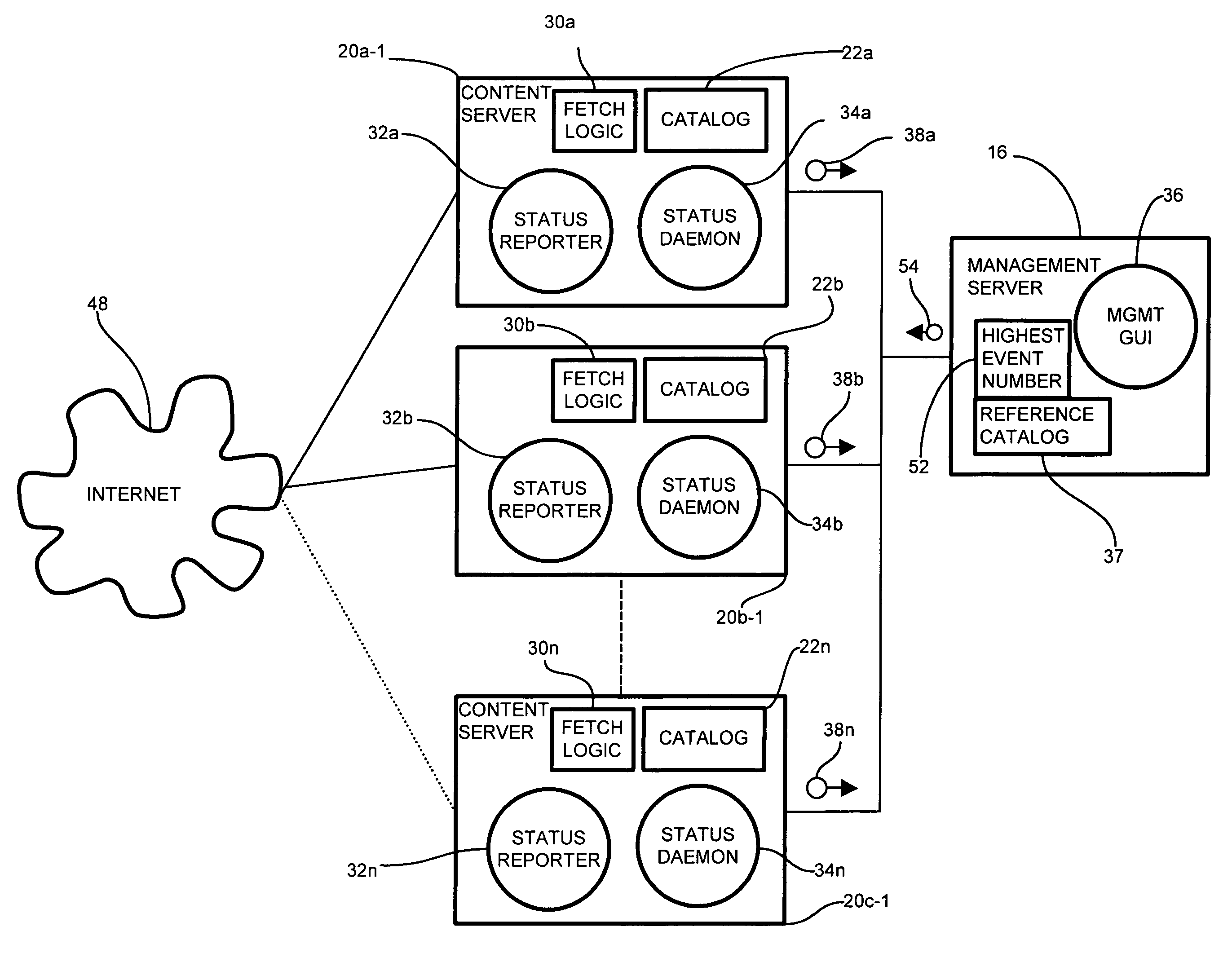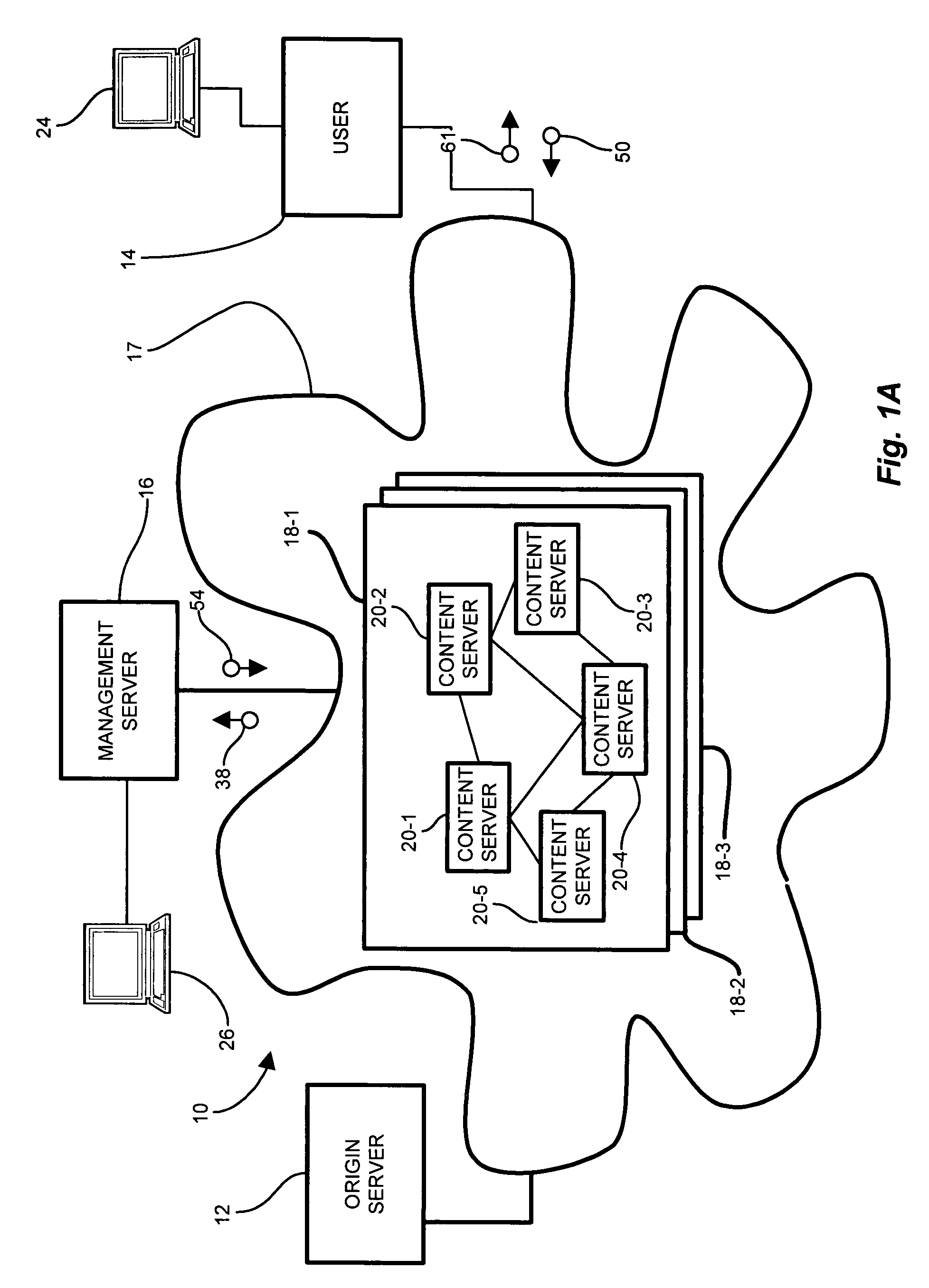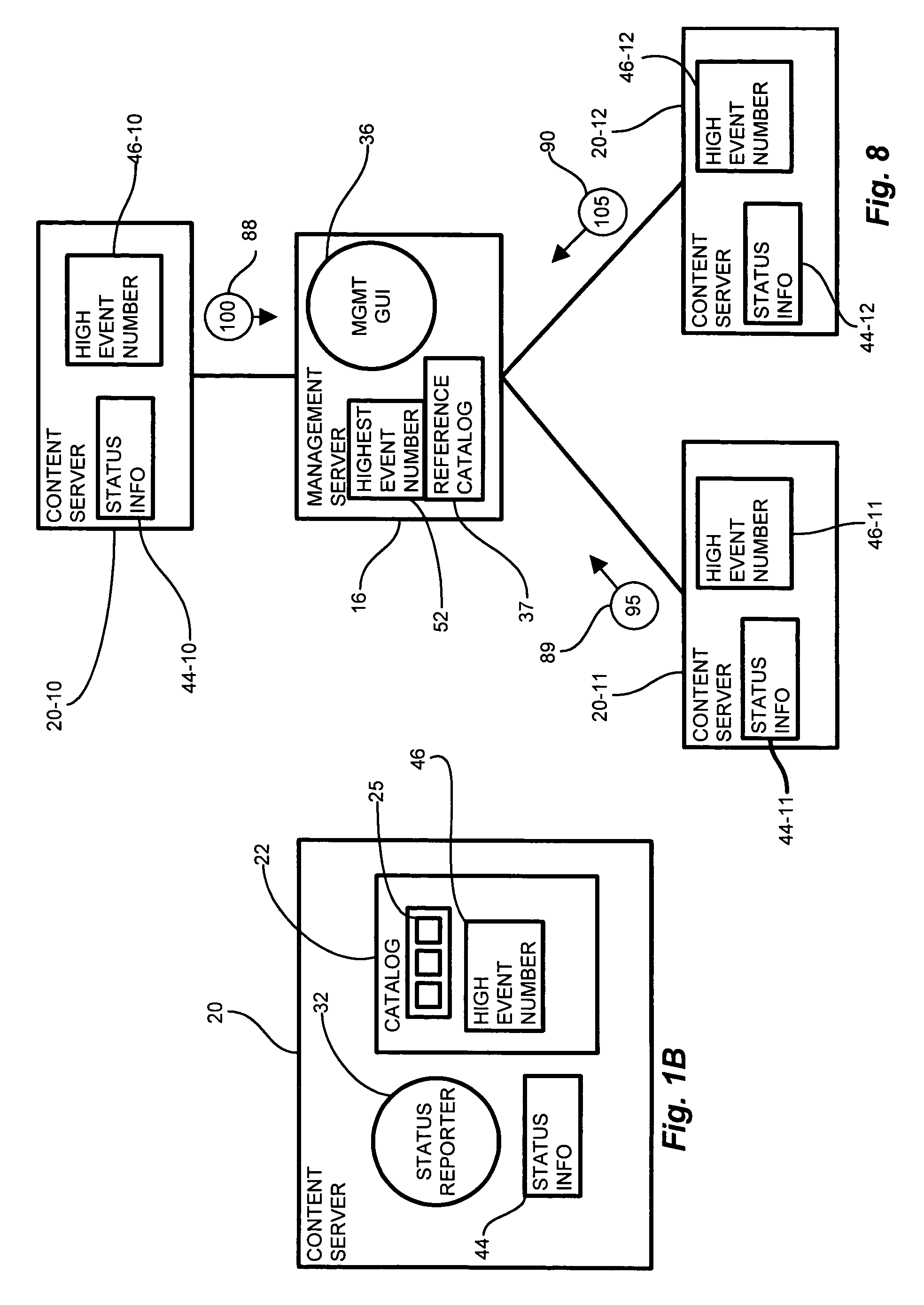Content delivery network (CDN) replication status reporter
a content delivery network and content reporter technology, applied in the field of content delivery network (cdn) replication status reporter, can solve the problems of affecting the response time of operators, affecting the availability of content, and affecting the reporting effect of content, etc., and achieve the effect of facilitating the response to operator initiated queries
- Summary
- Abstract
- Description
- Claims
- Application Information
AI Technical Summary
Benefits of technology
Problems solved by technology
Method used
Image
Examples
Embodiment Construction
[0047]Configurations of the invention provide for a replication status reporter which identifies an ordered list of events corresponding to content items (files) for replication (pre-positioning) in a content delivery channel, and determines a point of progression along a sequence (progression threshold) represented by the ordered list of files. In each channel, the content items correspond to a set of events denoting this sequence. The servers in a CDN channel receive these files according to a set of rules, which define the set of channel files as a series, or continuum, of these ordered events (catalog). Further, the files in a particular channel change over time, causing new files to become active and others to become inactive. A content server obtains files from an origin server (or servers) generally according to a channel list of files, and augmented by the rules to pre-position more critical files first and avoid unnecessary delays due to unavailable files, transmission erro...
PUM
 Login to View More
Login to View More Abstract
Description
Claims
Application Information
 Login to View More
Login to View More - R&D
- Intellectual Property
- Life Sciences
- Materials
- Tech Scout
- Unparalleled Data Quality
- Higher Quality Content
- 60% Fewer Hallucinations
Browse by: Latest US Patents, China's latest patents, Technical Efficacy Thesaurus, Application Domain, Technology Topic, Popular Technical Reports.
© 2025 PatSnap. All rights reserved.Legal|Privacy policy|Modern Slavery Act Transparency Statement|Sitemap|About US| Contact US: help@patsnap.com



